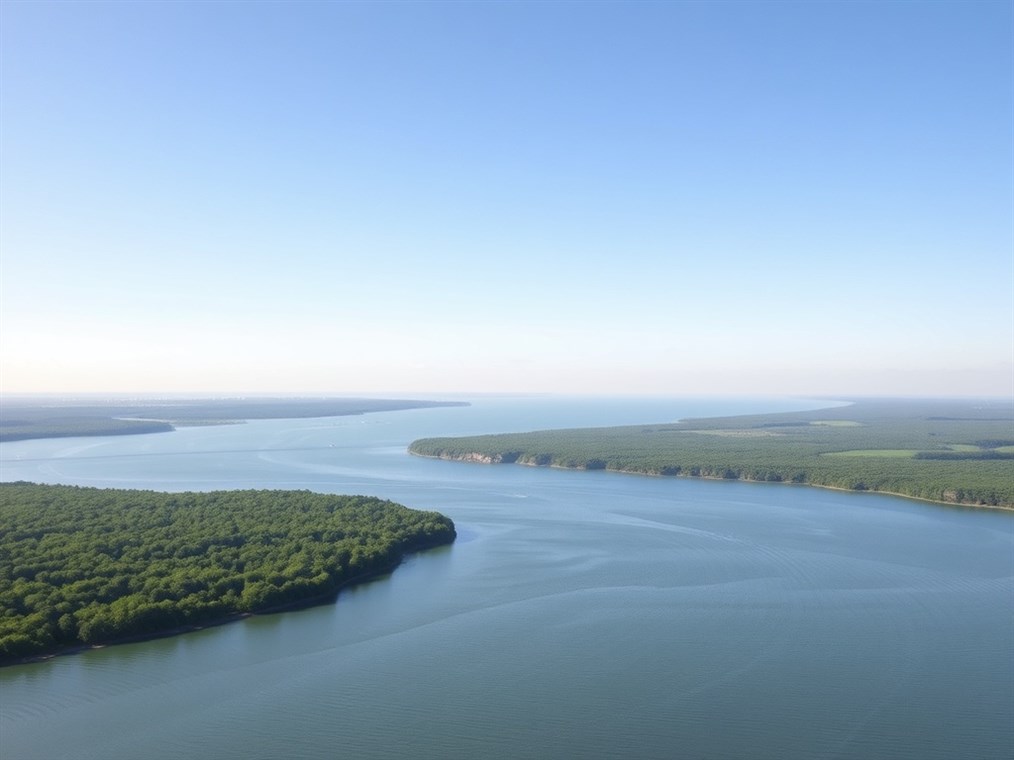
Is the St. Lawrence River Brackish? Let’s Dive In!
FactsIs the St. Lawrence River Brackish? Let’s Dive In!
The St. Lawrence River. Just the name conjures images of vast waterways and maritime adventures, doesn’t it? This isn’t just any river; it’s a vital link connecting the Great Lakes to the Atlantic Ocean, snaking its way for over 3,000 kilometers through Canada and the US. But here’s a question I often get asked: Is it brackish? In other words, is it salty? Well, the answer isn’t a simple yes or no.
First, let’s get on the same page. What exactly is “brackish” water? Think of it as that in-between zone, not quite freshwater but not as salty as the ocean. Technically, we’re talking about water with a salinity level between 0.5 and 30 grams of salt per liter. To put that in perspective, your typical freshwater source is below 0.5 ppt, while the ocean clocks in at around 35 ppt. You’ll usually find brackish conditions in estuaries, those fascinating spots where rivers meet the sea.
Now, back to the St. Lawrence. The thing is, the river’s salinity changes quite a bit as you travel along its length. It’s not one consistent body of water. You’ve got different sections, each with its own unique characteristics.
First, there’s the fluvial section, stretching from Kingston, Ontario, all the way to Lake Saint-Pierre in Quebec. This part? Purely freshwater. No tides to worry about here. The water’s makeup is basically determined by the rocks it flows over. Simple as that!
But things start to get interesting around Île d’Orléans, just downstream from Quebec City. This is where the St. Lawrence Estuary begins. Here, the river’s freshwater starts mingling with the Atlantic’s saltwater. Suddenly, tides become a factor, especially around Quebec City. Imagine the freshwater trying to float over the denser saltwater – it creates this fascinating two-layer system.
Next up is the Upper Estuary, also known as the brackish estuary. This zone runs from the eastern tip of Île d’Orléans to the mouth of the Saguenay River. Think of it as the main mixing bowl where the river says “hello” to the ocean.
Finally, we have the Lower Estuary and the Gulf of St. Lawrence. The lower estuary stretches from Tadoussac to Pointe-des-Monts, Quebec. Beyond Tadoussac, you’re basically in marine territory. The ocean calls the shots here. And the Gulf of St. Lawrence? It’s the grand finale, a massive estuary and semi-enclosed sea where the river finally empties out.
So, how salty are we talking at each point? Well, the salinity gradually creeps up as you head towards the Gulf. In the estuary, you’ll find a long stretch where the salinity changes depending on whether you’re at the surface or the bottom.
For example, between Île d’Orléans and the Montmagny Archipelago, the water’s not too salty during the warmer months. You might see 2-3‰ at the surface and 4-6‰ at the bottom. But come winter, when the river’s flowing a bit slower, that bottom layer can jump to 6-10‰. Beyond Coudres Island, though, you’re in saltwater country. By the time you reach Tadoussac, it’s full-on ocean salinity.
This gradual shift from fresh to salty creates a whole range of different habitats, which is pretty cool. The mixing zone in the estuary is like a nutrient-rich soup, perfect for all sorts of life. It’s a prime spot for fish nurseries, for example.
Of course, salinity isn’t set in stone. It can be influenced by a few things. Tides, obviously, play a big role, pushing seawater further upstream. The amount of freshwater flowing down the river also matters. Less water means more salinity. And even the time of year can have an impact. I’ve read that salinity tends to peak in the winter. Even human activities, like road salting, can have a surprising effect on the river’s chemistry!
So, to bring it all together: the St. Lawrence River isn’t simply “brackish” across its entire length. It’s freshwater at its source, gradually becoming brackish in the estuary, and finally turning fully saline as it approaches the ocean. It’s this dynamic transition that makes the St. Lawrence such a fascinating and important waterway, teeming with life and constantly changing. Pretty neat, huh?
You may also like
Disclaimer
Categories
- Climate & Climate Zones
- Data & Analysis
- Earth Science
- Energy & Resources
- Facts
- General Knowledge & Education
- Geology & Landform
- Hiking & Activities
- Historical Aspects
- Human Impact
- Modeling & Prediction
- Natural Environments
- Outdoor Gear
- Polar & Ice Regions
- Regional Specifics
- Review
- Safety & Hazards
- Software & Programming
- Space & Navigation
- Storage
- Water Bodies
- Weather & Forecasts
- Wildlife & Biology
New Posts
- Diving Deep into Tangerine: More Than Just a Sunny Locale
- Jamaica Backpack Daypack Pockets Shopping – Review
- TEOYETTSF Climbing Backpack Multifunction Military – Buying Guide
- The Curious Case of Cavendish’s Classroom: Where Did This Science Star Study?
- Dragon Backpack Insulated Shoulder Daypack – Buying Guide
- ROCKY Hi-Wire Western Boots: A Rugged Review After a Month on the Ranch
- Vertical Curbs: More Than Just Concrete Barriers
- Regatta Modern Mens Amble Boots – Honest Review
- YMGSCC Microfiber Leather Sandals: Beach to Boardwalk, Did They Hold Up?
- Tangier: More Than Just a Backdrop in “Tangerine”
- DJUETRUI Water Shoes: Dive In or Doggy Paddle? A Hands-On Review
- Barefoot Yellow Pattern Hiking 12women – Is It Worth Buying?
- Koa Trees: How Fast Do These Hawaiian Giants Really Grow?
- DDTKLSNV Bucket Hat: Is This Packable Sun Shield Worth the Hype?